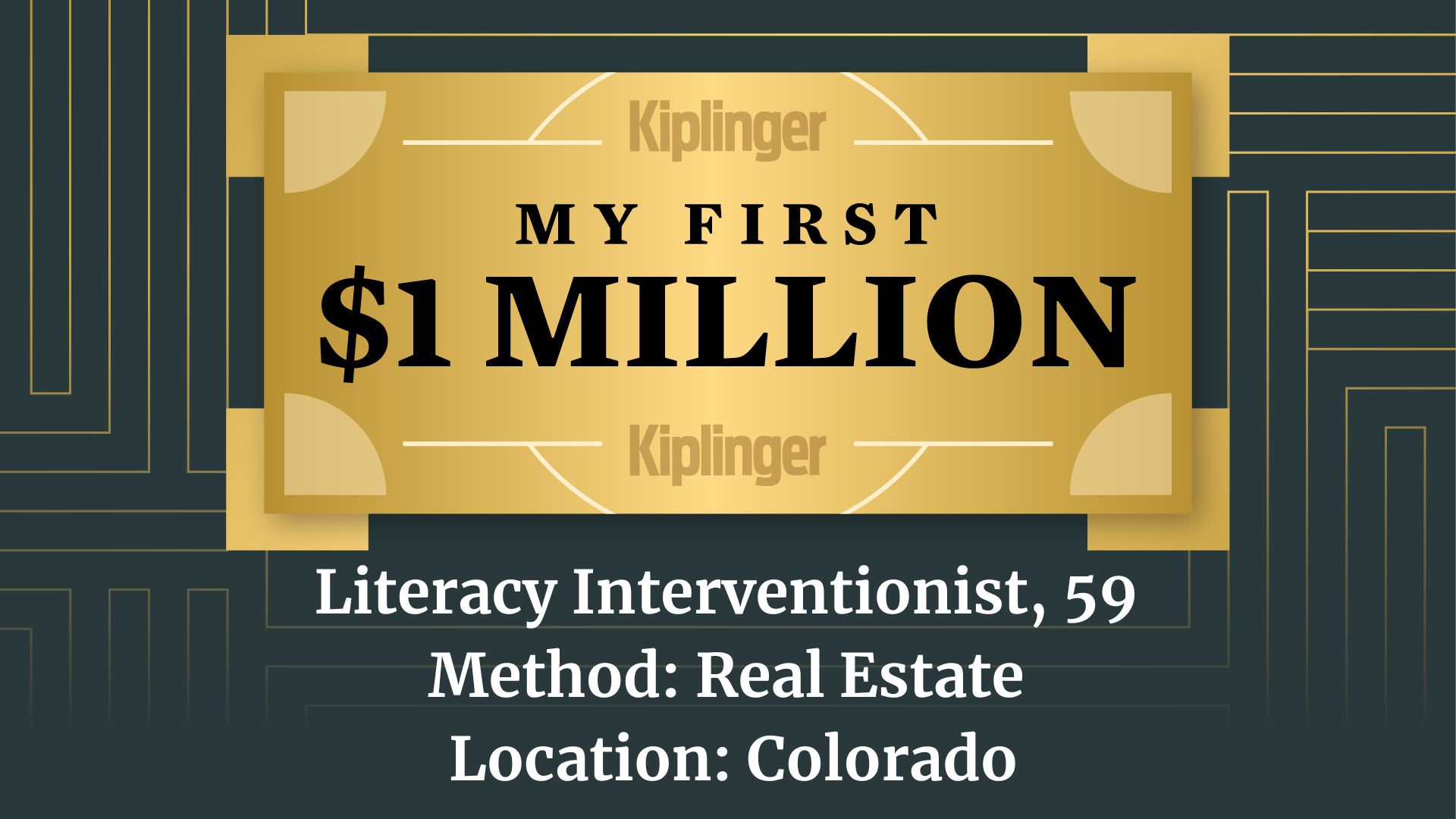Investing in Foreign Real Estate Goes Mainstream
New international real estate funds with low minimums let you to take advantage of property growth overseas, and they provide portfolio diversification.

Garish shopping centers in Warsaw and Prague. Sleek offices in the City, London's financial district. Single-family home communities and condo projects in (oh, the prices!) Tokyo. Real estate projects of this sort have long been beyond the reach of the typical U.S. investor. But now the investment industry is finally making foreign property accessible to the average Joe. Consider that development an opportunity for a portfolio twofer: combining the lure of real estate with the attraction of foreign stocks.
The breakthrough is the arrival of international real estate funds with minimum investments of as little as $1,000. These funds are poised to capitalize on an explosion of publicly traded property securities in Europe and Asia. Until recently, says John Robertson, portfolio manager of the new DWS RREEF Real Estate Securities fund, investment firms regarded overseas real estate stocks as suitable only for institutional investors. The attitude was that ordinary people would find these securities risky and hard to understand. So there were very few ways for us to invest, other than to buy one of the few foreign property stocks that traded in the U.S. as American depositary receipts.
Now that's all changed, and it's about time. What I've noticed during my travels abroad is that an elegant shopping mall in Sao Paulo, Brazil, with tenants such as Bally and Armani, has more in common with its counterparts in New York City and Los Angeles than with a Brazilian soybean or coffee company. If you can read an annual report -- and those of many international companies are usually available in English on the Internet -- you can note revenue and income trends and tell if a foreign real estate company has a solid business. It's also cool to see what properties in other nations look like.

Sign up for Kiplinger’s Free E-Newsletters
Profit and prosper with the best of expert advice on investing, taxes, retirement, personal finance and more - straight to your e-mail.
Profit and prosper with the best of expert advice - straight to your e-mail.
But results are what matters, and in that regard property securities everywhere are having a bang-up 2006. So far this year, European real estate securities, measured in dollars, have returned 61%, and Asian property stocks 32%. Toss in the 36% return of U.S. real estate investment trusts and you have a global gain of 40%, as expressed in an index assembled by the National Association of REITs and Britain's Financial Times newspaper.
Nearly all the surge, as with domestic REITs, is from appreciation in the underlying properties. Dividend income, which is running about 4% everywhere, is secondary. The declining dollar, while not the determining factor in a foreign developer's success, helps U.S.-based investors. That's because investments in euros, yen or pounds translate into more dollars when the greenback shrinks.
With this as a backdrop, there are three factors to consider when contemplating adding international real estate to your investment plan. First, by adding foreign real estate stocks or funds, do you get extra diversification above and beyond what you get from U.S. REITs? Second, what can you buy? And, third, which funds look attractive? (I name my favorite fund selections later.)
The diversification effect
European and Asian property markets are generally healthy. Their building booms are likely to outlast ours. That suggests that you should switch money invested in domestic real estate funds and export it. But don't overdo it. Several academic studies have found that the performance of global real estate securities has more to do with how real estate is doing globally than with any differences between American and overseas stock markets.
The Journal of Real Estate Portfolio Management reported in 2002 that the correlation of foreign stocks and foreign real estate to U.S. broad stock indexes is fairly close, although some real estate markets, such as Japan's and France's, do not correlate as closely as others with the U.S. property market. Goldman Sachs, issuer of the new Goldman Sachs International Real Estate Securities fund (symbol GIRAX), says international REITs and other property securities "can offer low correlation" to traditional asset classes. But Goldman also says the correlation of international public real estate with U.S. large-cap stocks is actually greater than the correlation between U.S. large-company stocks and U.S. REITs.
The evidence, therefore, is that if you invest in foreign real estate funds, think of it as real estate first, foreign stocks second. Many of the same banks, retailers, restaurant chains and, of course, corporations operate in the U.S., Europe, Japan, elsewhere in Asia, and in Mexico and Brazil. Developers and property investors are also famously international, from the Japanese buying Rockefeller Center to Australians picking up U.S. airports. Money is chasing returns and opportunities.
Stocks and funds to consider
If you're adventurous, a few foreign real estate companies trade as ADRs, or American depositary receipts, in the U.S. markets. British Land (BTLCY) is one of the biggest and oldest and has announced plans to convert from a regular company to a REIT next year. Analysts figure that its yield might rise from the current 2% to about 4% once it becomes a REIT and is obligated to boost its payout. But it mostly invests in standard British retail properties.
A hot development zone is post-Communist Eastern Europe, particularly countries there that are members of the European Union. A Dutch company called Rodamco Europe is a first-class owner of shopping centers and offices and a developer in Poland, the Czech Republic and Hungary, as well as in Austria and Germany. Rodamco Europe trades on the pink sheets (the non-Nasdaq over-the-counter market) with the symbol RCENF.PK. It and British Land have both soared in the past year.
However, most international real estate companies don't trade in the U.S. That's a good reason to turn to mutual funds. Here's a tour:
The oldest and only seasoned international real estate fund for individuals is Alpine International Real Estate Equity fund (EGLRX). It doesn't levy a sales charge and has a low expense ratio of 1.18%. The caution here is that Sam Lieber, the fund's longtime manager, stuffs this and his domestic real estate funds with whatever segment of real estate currently strikes his fancy. That's hotels now, so while you do get some interesting foreign selections here, you also get Hilton and Marriott and Starwood and some U.S. homebuilders. Lieber can miss his guesses sometimes, but he's delivered pretty good numbers more often than not, including in 2006. He seems to have an investment in almost every country you can think of.
The other actively managed no-load is Fidelity International Real Estate (FIREX). While Fidelity has deeper research capabilities than a boutique shop like Alpine, the manager on this fund has been there less than a year and lacks Lieber's lifetime of insights. The expenses are even lower at 0.91%, and the largest holdings are giant blue chips such as British Land and Mitsubishi Estate. Incredibly, there is just about zero overlap between the Alpine and Fidelity funds. The two-year-old Fidelity product gives every indication that it will stick to the tried and true, as most domestic REIT funds do. You could easily make a case for splitting an investment between the Alpine and Fidelity funds.
Over the summer, Northern Funds introduced the segment's only passive choice, Northern Global Real Estate Index fund (NGREX). There's no load, and annual expenses are 0.75%. The index it tracks is the FTSE-NAREIT, which means that close to half the fund's assets are in the U.S. and Canada. So this really is a global fund. That means that if you really want to split your real estate holdings between foreign and U.S. stocks, there's no need to hold any U.S. real estate funds; the Northern fund does the job. The yield will probably settle in between 3% and 4%. There hasn't been a full distribution yet.
Most of the segment's action is in load funds, and while normally I'd leave you here, you may want to make exceptions. One reason is to consider the value of the hands-on real estate expertise at places like RREEF and Goldman Sachs, the brains behind the DWS RREEF Global Real Estate Securities and Goldman Sachs International Real Estate Securities funds, respectively, as mentioned earlier. Both will invest for growth and income and venture into stocks of some smaller property companies. I expect both to perform well.
The same with the new Cohen Steers Asia Pacific Real Estate Securities (APFAX), the only strictly Asian real estate fund as of now. Several analysts believe Asia's real estate markets hold the most promise for 2007, and while the rest of the world isn't chopped liver, the focus on Asia could make the Cohen Steers fund the peppiest choice in the short run. In the fund's first three months, it gained more than 10%. If you invest with a financial adviser, he or she may be able to get you into load-waived versions of some of these funds.
Get Kiplinger Today newsletter — free
Profit and prosper with the best of Kiplinger's advice on investing, taxes, retirement, personal finance and much more. Delivered daily. Enter your email in the box and click Sign Me Up.

-
 Retire in Malta for Quiet Coastal Perfection
Retire in Malta for Quiet Coastal PerfectionSeemingly remote yet easily accessible to other points in Europe, sunny Malta offers paths to citizenship and residency for families and retirees.
By Drew Limsky
-
 How This Literacy Interventionist Made $1 Million
How This Literacy Interventionist Made $1 MillionEver wonder how someone who's made a million dollars or more did it? Kiplinger's new My First $1 Million series uncovers the answers.
By Joyce Lamb
-
 Why Investors Needn't Worry About U.S. Credit Downgrade
Why Investors Needn't Worry About U.S. Credit DowngradeFitch Ratings The United States saw its credit rating downgraded for just the second time in history, but experts aren't worried about the long-term damage to stocks.
By Dan Burrows
-
 White House Probes Tracking Tech That Monitors Workers’ Productivity: Kiplinger Economic Forecasts
White House Probes Tracking Tech That Monitors Workers’ Productivity: Kiplinger Economic ForecastsEconomic Forecasts White House probes tracking tech that monitors workers’ productivity: Kiplinger Economic Forecasts
By Matthew Housiaux
-
 Investing in Emerging Markets Still Holds Promise
Investing in Emerging Markets Still Holds PromiseEmerging markets have been hit hard in recent years, but investors should consider their long runway for potential growth.
By James K. Glassman
-
 Stocks: Winners and Losers from the Strong Dollar
Stocks: Winners and Losers from the Strong DollarForeign Stocks & Emerging Markets The greenback’s rise may hurt companies with a global footprint, but benefit those that depend on imports.
By Anne Kates Smith
-
 Income-Investing Picks for a Recession
Income-Investing Picks for a RecessionInvesting for Income Some consequences of an economic downturn work to the benefit of fixed-income investors. Here are three fund ideas that fit the bill.
By Jeffrey R. Kosnett
-
 5 Exciting Emerging Markets Funds to Buy
5 Exciting Emerging Markets Funds to BuyForeign Stocks & Emerging Markets Emerging markets funds haven't been immune to global inflationary pressures. But now might be the time to strike on these high-risk, high-reward products.
By Kent Thune
-
 Dogs of the Dow Are 2022's Best in Show
Dogs of the Dow Are 2022's Best in Showdividend stocks Some of the best investments for income investors in a volatile 2022 have come from the Dogs of the Dow.
By Jeffrey R. Kosnett
-
 Bond Values in a Volatile Market
Bond Values in a Volatile MarketInvesting for Income While the market's instability may not be over just yet, the latter half of the year should be less daunting – and possibly more rewarding – for investors.
By Jeffrey R. Kosnett